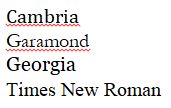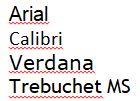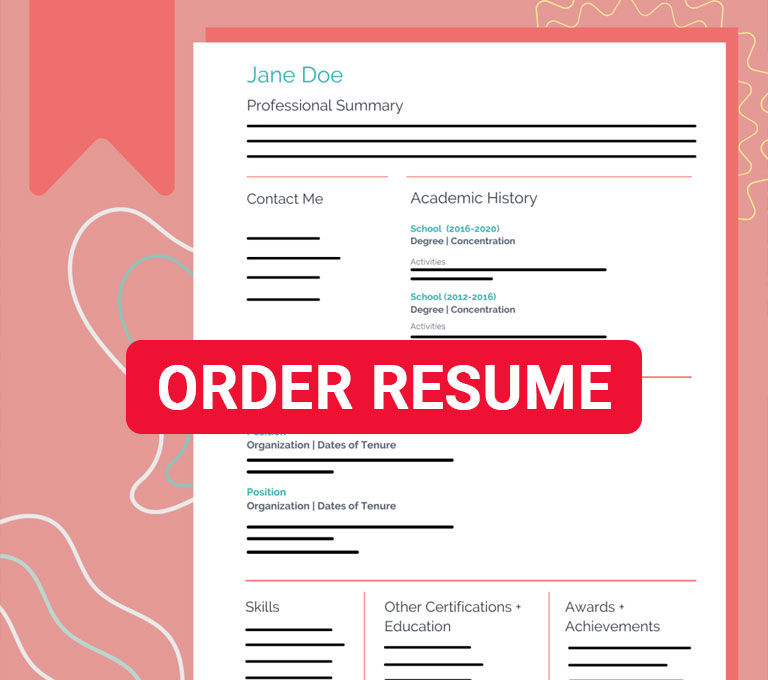Resume font
What font should we use when writing a resume? Can using one or another make a difference when reading? How important is it to accurately choose the font to use in our CV?
When writing your CV, you often forget the aesthetic aspect in favor of the substance alone, forgetting however that a good curriculum is also well presented. For this reason it is always good to pay attention to the font you use, and always choose one that is legible and makes even the most complex of CVs understandable. When evaluating the type of font to use, it must in fact be remembered that reading the document are human beings but can also be machines and therefore it is necessary that the format be assimilated by both. appropriate for your CV
The font we choose for our CV, as well as the graphics, always reflect who we are, what we want and also how we present ourselves. They are the first business card we have to talk to the company we want to work for and for this reason they must be chosen with care. Care must be taken not only in choosing a font that we like but also a font that in some way reflects the company we are applying for, which expresses the same values and the same philosophy.
Choose a font is not a secondary operation when building your CV, but it is one of the crucial parts of any recruitment process.
The two main character families
While it’s tempting to choose an uncommon font to differentiate yourself, the best option is always to choose a font that is universally valid, legible and understandable instead. The fonts are divided into Serif and Sans Serif: the Serifs are the most elegant ones, with extensions at the end of the font that make them sweeter to see. The San Serif are instead those truncated, without any lengthening and less graceful.
Some of the Serif fonts:

Some of the non-Serif fonts:

Which font to choose for your CV?
In light of the above, Serifs are universally considered better when writing a CV. The reason why Serifs are considered the best is that they are made in such a way that they are graphically simple and known to everyone. Furthermore, even the machines for electronic reading of CVs are able to read them precisely because of their simplicity. The most chosen and appreciated Serif fonts for use on a resume are:
- Arial
- Calibri
- Garamond
- Verdana
Let’s look at them a little more in detail:
Arial
The universally used font, due to its extreme versatility, its soft curves and its shape. Lately some have started to consider it outdated, but it continues to be the first choice for those who want a clean, understandable and elegant CV.
Calibri
With narrower letters and one more line softer, it can be considered the successor of Arial, ideal for those who have to insert a lot of notions in the CV but do not want to exaggerate in terms of length.
Garamond
Garamond is not a font for everyone and for all job positions as it is not only extremely elegant but also extremely formal. Its use should be carefully evaluated, based on the position one covers and which one would like to cover.
Verdana
One of the most classic and safe choices, Verdana is characterized by large letters and space between them. Some consider it too informal but playing with size it can be the perfect choice for those who want a clean and efficient CV.
Good old Times New Roman
Times New Roman it was the font that made history in the past: installed by default almost everywhere, it was used for all types of documents, from the most formal to the most informal, including CV. Today it has been outdated and choosing it could mean closing all doors, although it continues to be universally read and understandable.
Other outdated fonts and not to be used for a curriculum vitae are Courier and Comic Sans, the first because it is considered old and the second because it is considered illegible and childish.
The size of the characters and the line spacing
Once the font has been chosen, the size of the characters must be chosen, which should never exceed 11 points, to avoid being excessive and diverting the reader’s attention, and never less than 9 points. As for the line spacing, choose minimum 1.15 and maximum 1.4.
Not just fonts

While the font is essential to present a neat and professional CV, the formatting of the resume is equally important. Cover letter and CV should be formatted in the same way and using the same font but, above all, the various parts of the CV must always be arranged in such a way as to be ordered and legible. Green light therefore to the headings in bold, to a layout that highlights the textual parts and nothing else and to the use of different sizes to highlight some elements over others. As for the colors, make sure you don’t turn your CV into a children’s drawing and limit yourself to a maximum of 3 colors, blue / black / red, but only and exclusively if using different colors makes sense.
In conclusion
To conclude, when writing a curriculum vitae it is good to pay attention to the font you use. It is therefore good to keep in mind the following things:
- Always use a standard font, understandable and readable by humans and machines;
- Always and only use a single font, differentiating the various parts of the CV thanks to the formatting;
- Never use Times New Roman, Courier and Comic Sans;
- Once you have chosen the perfect font for your CV, be sure to choose a size between 9 and 11 points with line spacing of minimum 1.15 and maximum 1.4.


